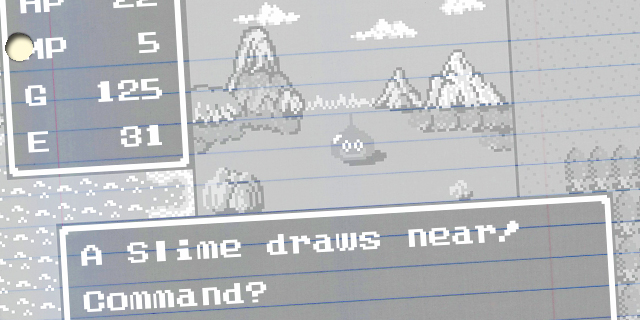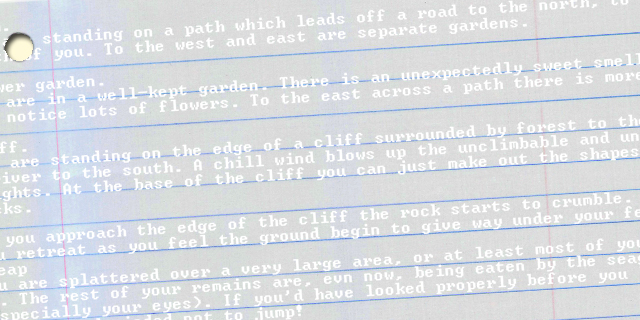
Genre 101 is a series that looks at the past and present of a game genre to find lessons about what defines it. In this installment, guest lecturers Lucas White and Eric Albuen give a seminar on the fighter.
Learning from the sensei
 Lucas White: 1984’s Karate Champ is the ostensible beginning of one-on-one fighting in video games. The player operates the game entirely with joysticks, and must simply land a hit to score. Karate Champ set the stage for many genre features: multiple techniques or “moves,” two-player competition and palette-swapped karate gis. READ MORE
Lucas White: 1984’s Karate Champ is the ostensible beginning of one-on-one fighting in video games. The player operates the game entirely with joysticks, and must simply land a hit to score. Karate Champ set the stage for many genre features: multiple techniques or “moves,” two-player competition and palette-swapped karate gis. READ MORE

Genre 101 is a series that looks at the past and present of a game genre to find lessons about what defines it. This week, guest lecturers Andrew Passafiume and Chris Dominowski unravel the ins and outs of the JRPG.
A world of adventure
 Chris Dominowski: While Black Onyx is generally seen as the first real JRPG, Dragon Quest broke new ground in the nascent genre by giving the Eastern flavor of role-playing its own identity, and began distancing itself from series like Wizardry or Ultima. The game sported a manga-esque art direction by Akira Toriyama, a vast world then unseen on home consoles and a greater emphasis on a top-down perspective. With all that in place, and with future entries in the series depending more on story and characters, Dragon Quest became one of the most celebrated franchises among Japanese gamers. READ MORE
Chris Dominowski: While Black Onyx is generally seen as the first real JRPG, Dragon Quest broke new ground in the nascent genre by giving the Eastern flavor of role-playing its own identity, and began distancing itself from series like Wizardry or Ultima. The game sported a manga-esque art direction by Akira Toriyama, a vast world then unseen on home consoles and a greater emphasis on a top-down perspective. With all that in place, and with future entries in the series depending more on story and characters, Dragon Quest became one of the most celebrated franchises among Japanese gamers. READ MORE

Genre 101 is a series that looks at the past and present of a game genre to find lessons about what defines it. This week, Jeff untangles the complicated web of the MMO.
Dungeon-raiding with friends
 Jeff deSolla: MMOs have their roots in multi-user dungeons, as an attempt to do a tabletop RPG like Dungeons and Dragons over the Internet. This had varying degrees of success, and they picked up a cult following which remains even now, though the vast majority shut down in the late ’90s as bigger and more expansive games took their place. Despite this, almost every aspect of the modern MMO was likely present in a MUD at some point, from crafting to PvP. READ MORE
Jeff deSolla: MMOs have their roots in multi-user dungeons, as an attempt to do a tabletop RPG like Dungeons and Dragons over the Internet. This had varying degrees of success, and they picked up a cult following which remains even now, though the vast majority shut down in the late ’90s as bigger and more expansive games took their place. Despite this, almost every aspect of the modern MMO was likely present in a MUD at some point, from crafting to PvP. READ MORE

Genre 101 is a series that looks at the past and present of a game genre to find lessons about what defines it. This week, Shawn guides us through what may be the oldest genre of them all.
The first serve
 Shawn Vermette: Everyone has heard of Pong; it might be the most ubiquitous video game in existence. But it wasn’t the first sports game. Tennis for Two, which was made way back in 1958, holds that honor. In fact, Tennis for Two was arguably the first video game ever. It’s a fitting distinction, given that sports lend themselves so well to the video game medium. Using an oscilloscope, since monitors didn’t even exist back then, two people could hit a ball back and forth over a net using basic analog controllers. That was basically it, but it was over 20 years before anyone was able to surpass it in complexity. READ MORE
Shawn Vermette: Everyone has heard of Pong; it might be the most ubiquitous video game in existence. But it wasn’t the first sports game. Tennis for Two, which was made way back in 1958, holds that honor. In fact, Tennis for Two was arguably the first video game ever. It’s a fitting distinction, given that sports lend themselves so well to the video game medium. Using an oscilloscope, since monitors didn’t even exist back then, two people could hit a ball back and forth over a net using basic analog controllers. That was basically it, but it was over 20 years before anyone was able to surpass it in complexity. READ MORE

Genre 101 is a series that looks at the past and present of a game genre to find lessons about what defines it. This week, Justin tells us how fending off waves of creeps became a global addiction.
Fortify and survive
 Justin Last: Build your castle, place your cannons, and fend off the unrelenting hordes. 1990 arcade release Rampart ran in phases: “Prepare for Battle”, “Build and Repair” and “Place Cannons.” As an active participant the “Prepare for Battle” round, you shoot cannons at enemy ships and grunts. “Build and Repair” is where castles are built from Tetris-esque blocks, and “Place Cannons” is self-explanatory. It doesn’t feel like what we play today, but Atari’s arcade effort started the defense genre. READ MORE
Justin Last: Build your castle, place your cannons, and fend off the unrelenting hordes. 1990 arcade release Rampart ran in phases: “Prepare for Battle”, “Build and Repair” and “Place Cannons.” As an active participant the “Prepare for Battle” round, you shoot cannons at enemy ships and grunts. “Build and Repair” is where castles are built from Tetris-esque blocks, and “Place Cannons” is self-explanatory. It doesn’t feel like what we play today, but Atari’s arcade effort started the defense genre. READ MORE

 Lucas White: 1984’s Karate Champ is the ostensible beginning of one-on-one fighting in video games. The player operates the game entirely with joysticks, and must simply land a hit to score. Karate Champ set the stage for many genre features: multiple techniques or “moves,” two-player competition and palette-swapped karate gis. READ MORE
Lucas White: 1984’s Karate Champ is the ostensible beginning of one-on-one fighting in video games. The player operates the game entirely with joysticks, and must simply land a hit to score. Karate Champ set the stage for many genre features: multiple techniques or “moves,” two-player competition and palette-swapped karate gis. READ MORE



 Chris Dominowski: While Black Onyx is generally seen as the first real JRPG, Dragon Quest broke new ground in the nascent genre by giving the Eastern flavor of role-playing its own identity, and began distancing itself from series like Wizardry or Ultima. The game sported a manga-esque art direction by Akira Toriyama, a vast world then unseen on home consoles and a greater emphasis on a top-down perspective. With all that in place, and with future entries in the series depending more on story and characters, Dragon Quest became one of the most celebrated franchises among Japanese gamers.
Chris Dominowski: While Black Onyx is generally seen as the first real JRPG, Dragon Quest broke new ground in the nascent genre by giving the Eastern flavor of role-playing its own identity, and began distancing itself from series like Wizardry or Ultima. The game sported a manga-esque art direction by Akira Toriyama, a vast world then unseen on home consoles and a greater emphasis on a top-down perspective. With all that in place, and with future entries in the series depending more on story and characters, Dragon Quest became one of the most celebrated franchises among Japanese gamers. 
 Jeff deSolla: MMOs have their roots in multi-user dungeons, as an attempt to do a tabletop RPG like Dungeons and Dragons over the Internet. This had varying degrees of success, and they picked up a cult following which remains even now, though the vast majority shut down in the late ’90s as bigger and more expansive games took their place. Despite this, almost every aspect of the modern MMO was likely present in a MUD at some point, from crafting to PvP.
Jeff deSolla: MMOs have their roots in multi-user dungeons, as an attempt to do a tabletop RPG like Dungeons and Dragons over the Internet. This had varying degrees of success, and they picked up a cult following which remains even now, though the vast majority shut down in the late ’90s as bigger and more expansive games took their place. Despite this, almost every aspect of the modern MMO was likely present in a MUD at some point, from crafting to PvP. 
 Shawn Vermette: Everyone has heard of Pong; it might be the most ubiquitous video game in existence. But it wasn’t the first sports game. Tennis for Two, which was made way back in 1958, holds that honor. In fact, Tennis for Two was arguably the first video game ever. It’s a fitting distinction, given that sports lend themselves so well to the video game medium. Using an oscilloscope, since monitors didn’t even exist back then, two people could hit a ball back and forth over a net using basic analog controllers. That was basically it, but it was over 20 years before anyone was able to surpass it in complexity.
Shawn Vermette: Everyone has heard of Pong; it might be the most ubiquitous video game in existence. But it wasn’t the first sports game. Tennis for Two, which was made way back in 1958, holds that honor. In fact, Tennis for Two was arguably the first video game ever. It’s a fitting distinction, given that sports lend themselves so well to the video game medium. Using an oscilloscope, since monitors didn’t even exist back then, two people could hit a ball back and forth over a net using basic analog controllers. That was basically it, but it was over 20 years before anyone was able to surpass it in complexity. 
 Justin Last: Build your castle, place your cannons, and fend off the unrelenting hordes. 1990 arcade release Rampart ran in phases: “Prepare for Battle”, “Build and Repair” and “Place Cannons.” As an active participant the “Prepare for Battle” round, you shoot cannons at enemy ships and grunts. “Build and Repair” is where castles are built from Tetris-esque blocks, and “Place Cannons” is self-explanatory. It doesn’t feel like what we play today, but Atari’s arcade effort started the defense genre.
Justin Last: Build your castle, place your cannons, and fend off the unrelenting hordes. 1990 arcade release Rampart ran in phases: “Prepare for Battle”, “Build and Repair” and “Place Cannons.” As an active participant the “Prepare for Battle” round, you shoot cannons at enemy ships and grunts. “Build and Repair” is where castles are built from Tetris-esque blocks, and “Place Cannons” is self-explanatory. It doesn’t feel like what we play today, but Atari’s arcade effort started the defense genre. 















